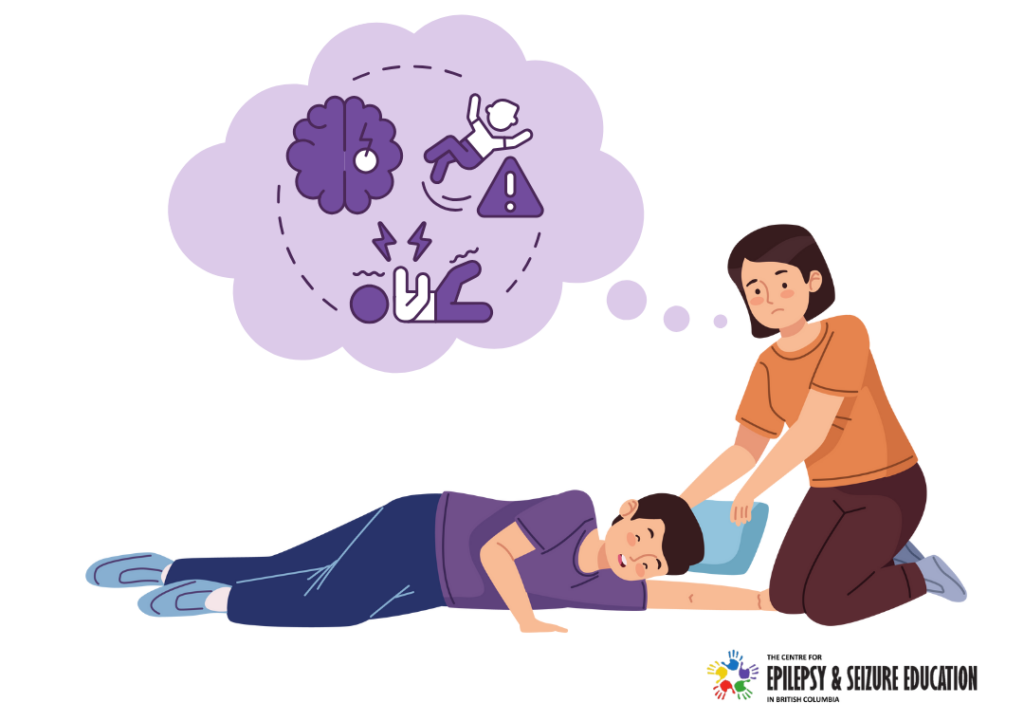First Aid Procedures for Seizures
The Importance of Knowing Seizure First Aid
Knowing seizure first aid is essential because it can significantly impact the safety, recovery, and well-being of individuals experiencing a seizure. Prompt and correct responses during a seizure episode can prevent injuries, such as head trauma or choking, and reduce the risk of complications.
Seizure first aid also empowers bystanders and caregivers to stay calm and provide reassurance, which is vital for creating a supportive environment during and after the episode. Understanding the proper techniques, such as positioning the person on their side to maintain an open airway and avoiding harmful actions like restraining or inserting objects into the mouth, ensures effective intervention.
Furthermore, documenting key details about the seizure, such as its duration, behaviors observed, and any medications administered, provides invaluable information for healthcare providers to refine treatment plans and manage the condition effectively. By learning seizure first aid, individuals can save lives and improve outcomes for those living with epilepsy or other seizure disorders.

First Aid for Tonic-Clonic Seizures
During the Seizure:
Stay Calm: Your composure helps maintain control of the situation.
Ease to the Floor: Gently guide the individual to the ground to avoid injuries from falls.
Clear the Area: Remove sharp objects, furniture, or hazards nearby.
Cushion the Head: Use a soft object like a folded jacket to protect the head.
Turn on the Side: Position the person on their side to keep the airway open and reduce choking risks.
Do Not Restrain: Avoid holding the person down or restricting their movements.
Avoid Mouth Insertion: Do not place anything in the person’s mouth.
After the Seizure:
Check Breathing: Ensure normal breathing resumes.
Reassure: Speak calmly as the person regains consciousness.
Avoid Fluids or Food: Do not give anything to eat or drink until fully alert.
Assess Injuries: Look for any injuries sustained during the seizure.
First Aid for Individuals in Wheelchairs
During the Seizure:
-
Lock the Brakes: Immediately lock the wheelchair brakes to prevent it from moving during the seizure.
-
Recline the Chair: If the wheelchair has a reclining function, gently recline the chair to provide more stability and reduce the risk of injury.
-
Secure the Individual: Ensure the individual is seated securely. Use any available straps if they are already in place but do not apply new restraints.
-
Protect the Head: If possible, cushion the head with a soft object, such as a jacket or a pillow.
-
Tilt the Head to the Side: Gently tilt their head to the side to keep the airway open and prevent choking.
-
Do Not Move the Individual: Avoid transferring them from the wheelchair unless absolutely necessary for safety.
After the Seizure:
-
Monitor Breathing: Ensure normal breathing resumes, and check for any airway obstructions.
-
Provide Reassurance: Speak calmly and comfort the individual as they regain awareness.
-
Check for Injuries: Assess for any potential injuries or signs of discomfort.
-
Assist with Positioning: Help the person sit upright comfortably once they are fully conscious and recovered.
First Aid for Focal Dyscognitive Seizures
Guide Away from Hazards: If the individual appears confused or disoriented, gently redirect them to a safe location.
Speak Reassuringly: Use a calm tone to communicate and reduce agitation.
Do Not Force Actions: Allow the person to regain awareness naturally.
Seizures That Rarely Require Immediate First Aid
Certain types of seizures, such as absence seizures, atonic seizures, myoclonic seizures, and focal seizures with retained awareness, often resolve quickly and do not pose immediate dangers.
First aid is only necessary if:
The seizure lasts longer than five minutes.
There is a risk of injury.
It is a first-time seizure or an unusual occurrence.
Emergency Medications for Seizures
Midazolam Overview:
Midazolam is a benzodiazepine commonly prescribed for emergency seizure management due to its rapid onset and effectiveness.
Administration Methods:
Buccal (inside the cheek): Administered using a pre-measured syringe. Quick absorption makes it effective for controlling prolonged seizures.
Intranasal: Delivered as a spray into the nostrils for rapid absorption.
Key Points:
Follow the dosage prescribed by the neurologist.
Monitor the individual closely after administration.
Document the time and dosage given for medical personnel.
Storage:
Keep in a cool, dry place away from direct sunlight.
Ensure it is accessible only to authorized caregivers.
When to Call an Ambulance
Status Epilepticus: Seizure lasting more than five minutes or recurrent seizures without recovery.
First-Time Seizure: If the individual has no history of seizures.
Post-Seizure Complications: Prolonged confusion, breathing difficulties, or sustained injuries.
Special Circumstances: Seizures occurring during pregnancy, diabetes, or in water environments.
Information for Emergency Responders
When medical assistance arrives, provide detailed information:
Seizure Duration and Description: Include observed behaviors and movements.
Level of Consciousness: Describe the person’s responsiveness.
Breathing and Injuries: Note any irregularities or trauma.
Medication Administered: Specify any emergency drugs given, including time and dosage.
